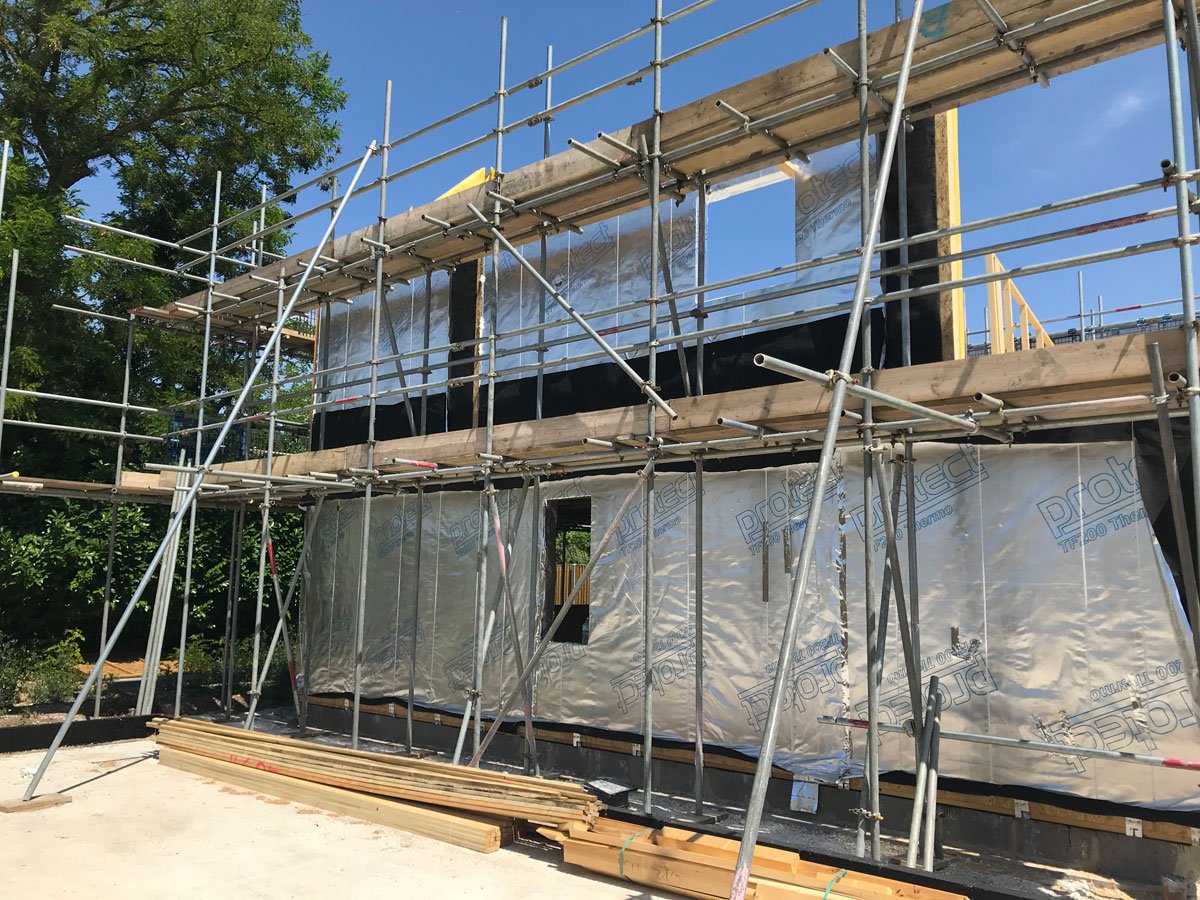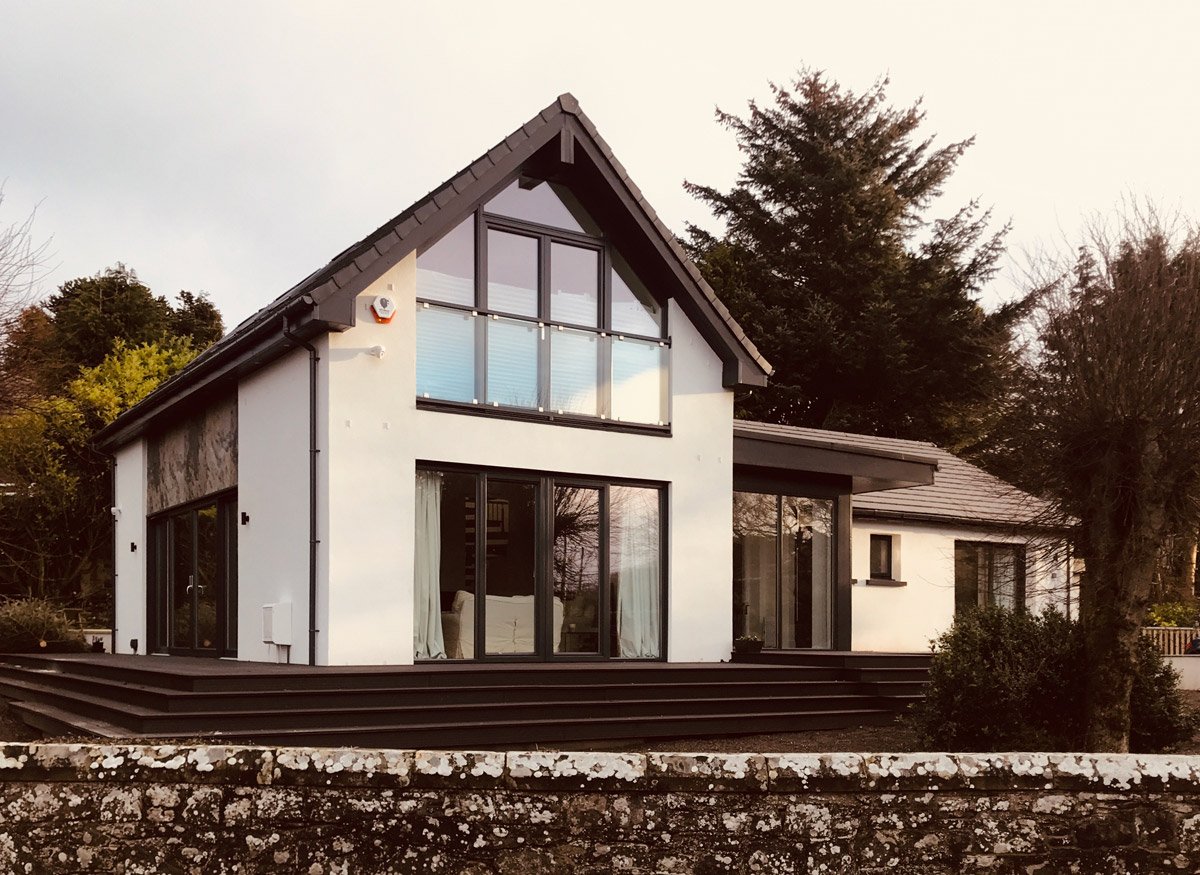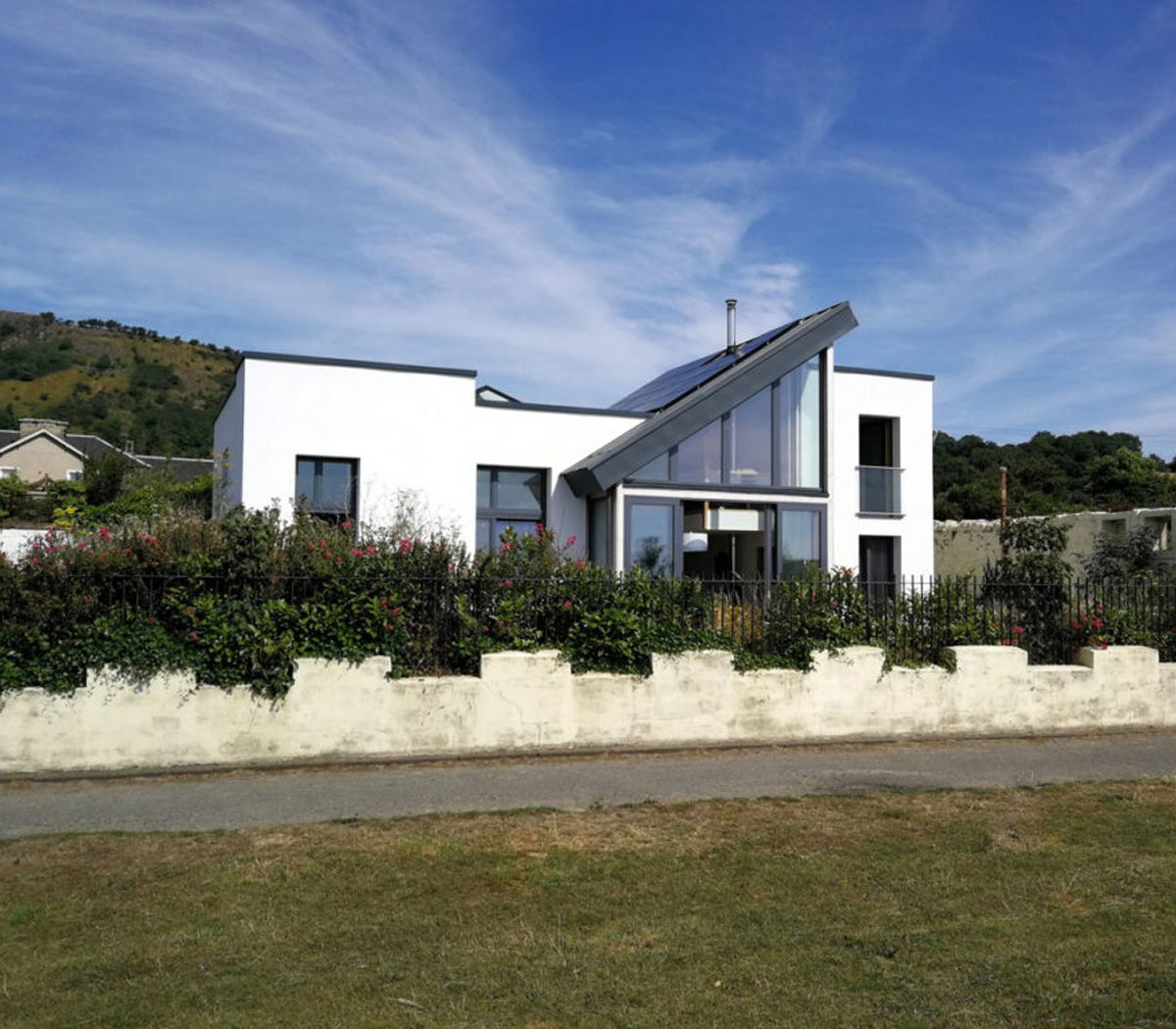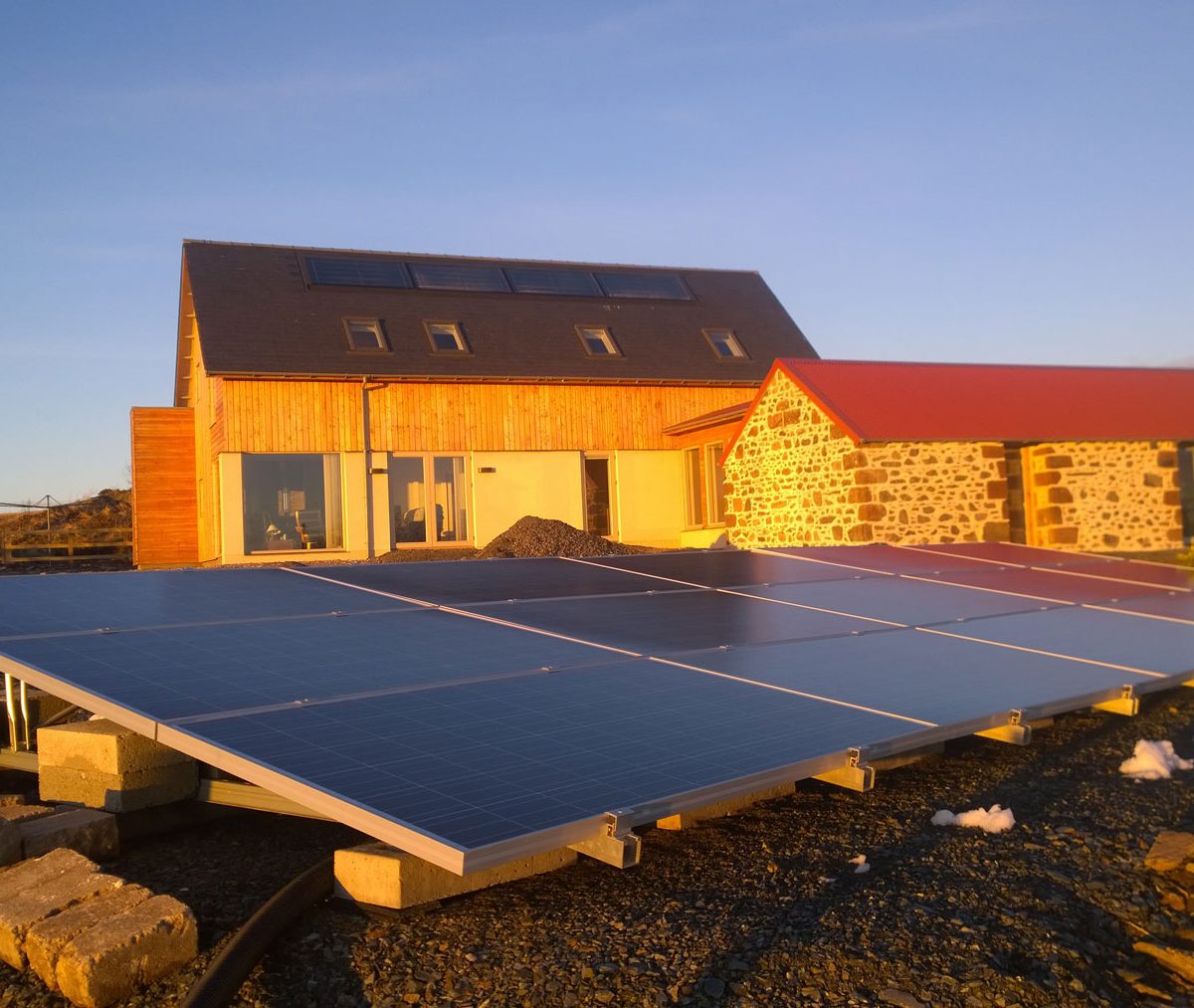The VAT reclaim scheme was introduced in 1974 (section 35 VATA) to encourage private individuals to create new dwellings. When the VAT Act came into force in 1994, this was amended as VAT refunds for DIY builders and converters. In 2009, that scheme was replaced by what we have today – VAT431.
We spoke to Andrew Jones from Andrew Jones VATman Ltd, who specialises in processing & submitting VAT reclaims on new builds under the DIY VAT431 scheme and asked him to provide his advice to our readers regarding reclaiming VAT for Self Build and conversions in England and Wales.
This mini-series consists of two parts. The first article will present all crucial information on the DIY VAT431 scheme. The second one will address the most common questions David gets from Self Builders and how ‘The VATman’ services help get their clients maximum VAT reclaim.

ARE YOU ELIGIBLE FOR THE DIY VAT431 SCHEME?
You can qualify for the DIY VAT431 scheme if you have created a new dwelling in its own right for yourself or a direct family member to live in, and there is no planning restriction in relation to its separate disposal in the future. For example, you don’t qualify for the scheme if:
– The dwelling will be unable to be sold separately from any other dwelling
– There is a restriction on who lives there or for how long
– There is an agricultural tie or a link to a business, all of which have a restriction
– You intend to rent or sell the property shortly after completion
The scheme is created to reward and encourage private individuals to build their own homes, so you do not need to be VAT registered.
The deadline for submission of a DIY VAT431 reclaim is within three months of the date of your completion evidence, and predominantly that would be a building control completion certificate.

WHAT IS COMPLETION EVIDENCE?
Completion evidence is proof that the building is completed and in a habitable condition. You only need one form of completion evidence. The most popular forms of evidence are:
– A Building Control Completion Certificate
– A Letter of Habitation from Building Control
– Council Tax Banding Valuation
Based on the current HMRC interpretation of the rules, the date on the Building Control Completion Certificate is definitive, so your claim must be submitted within three months of this document being issued.
You can also use Council Tax Banding Valuation as your completion evidence, but only if a Building Control Completion Certificate hasn’t been issued yet. Otherwise, you should submit a Building Control Completion Certificate.
HOW TO APPLY FOR THE DIY VAT431 SCHEME?
To claim for the DIY VAT431, you need to fill in the VAT431NB form and submit it alongside the following documents:
– All original invoices. They must be in your name and, if not, the reason why. HMRC doesn’t accept photocopies. HMRC accepts receipts from companies like B&Q, Tiles R Us, Wickes, Homebase etc., all of which have no names or addresses.
– The building regulation completion certificate – HMRC accept copies of this document.
– Evidence of planning permission – either full planning permission or outline planning permission and approval of reserved matter.
WHAT NEXT?
Within around two weeks after you submit your claim, HMRC will contact you to acknowledge they received your claim and ask any questions they have.
They will conduct their internal research, such as looking for the property online to see if it is for sale or rent and check your planning and plans. If they believe that a section of your planning or reclaim does not qualify, they may ask for an apportionment.

After you answer all HMRC’s questions and they are satisfied with the provided information, the claim passes eligibility. This means HMRC acknowledged that you are due a refund and will now be placed in a queue for processing. Then, a case officer will be assigned to your claim and check your invoices in detail to agree or reduce the amount that your claim was submitted for.
Several weeks later, you will receive your package back in the mail with a letter explaining the total amount HMRC intends to pay you with an explanation if they are planning to pay you something different than the full amount you claimed for. A week later, the funds are in your bank.
HOW LONG DOES IT USUALLY TAKE FOR HMRC TO PROCESS A VAT RECLAIM?
Since the introduction of the new digital option, the process takes around 3 to 4 weeks.
WHAT ARE THE BIGGEST CHALLENGES FOR A SELF BUILDER DURING THE VAT RECLAIMING PROCESS?
First of all, three months that you have after receiving completion evidence is quite a short period of time, so you should plan the whole process carefully (document gathering, confirming purchases that you can reclaim the VAT from etc.) and make sure you will submit the claim on time.
HMRC are strict with the deadlines, and the chances are big that they will refuse your claim if it is late.
After gathering all your invoices and receipts, make sure that your documents meet the criteria of a VAT invoice (See the table below). There is a common misconception that all proof of purchase needs to include your name and address. HMRC accepts receipts from companies like B&Q, Tiles R Us, Wickes, Homebase etc., all of which have no names or addresses.

The names and addresses only become an issue if it is in a name and address other than your own. Please refrain from buying materials in the name of your project manager, relatives, builder or your business name, even if the business name incorporates your name.
HMRC’s VAT Invoice Requirements
– Supplier’s name and address
– Supplier’s VAT registration number
– An invoice number
– The invoice date
– Your name and address
– A description sufficient to identify the goods or services supplied to the customer
– The total amount of VAT charged
For a different type of item listed on the invoice, you must show:
– The unit price or rate, excluding VAT
– The quantity of goods or the extent of the services
– The rate of VAT that applies to what’s being sold
– The total amount payable, excluding VAT
The most challenging part is appeasing HMRC’s questions when they write to you after submitting the claim. HMRC will actively look for a reason not to pay the claim in its entirety in the first instance and then try to find reasons to reduce your claim after it is acknowledged as valid. Also, make sure you only pay VAT when you should.
YOU SHOULDN'T PAY VAT TO CONTRACTORS WHEN THEY COME TO THE SITE TO SUPPLY AND FIT
Any contractor visiting the site to do work should not charge VAT for their labour or the materials they used. The contract you sign with them should be VAT free or zero-rated. If you pay VAT to a contractor when you shouldn’t have done so, HMRC will not refund you this VAT, despite them having indirectly received this money from the contractor in their VAT Return.
The companies offering supply and fit services, such as window companies, plumbers, underfloor heating companies, electricians, all tradesmen, burglar alarm installers etc., should be zero-rated VAT for a Self Builder.
Some companies are reluctant to offer zero-rated sales, and it can be a good idea to get a VAT exemption certificate created for your project. Then, you can hand that to trades coming to do work on your site to remind them that you are VAT exempt. On the other hand, you are required to pay VAT and cannot reclaim professional fees such as planning costs, building control fees, architects, structural engineers etc.
POTENTIAL PROBLEMS
HMRC are more strict than ever when assessing your reclaim application. Below are four of the most common issues that could arise with your application:
- HMRC will conduct online research to check whether your property is put on sale or available to rent. You can’t use the scheme on properties being used for business. If you profit from them in any way, they are viewed as a business.
- Your invoices are not in your name personally. When buying materials, you should use your personal name, not anyone else’s or your business name. Otherwise, HMRC will request evidence that you paid these invoices yourself personally.
- Your property has planning as a workers dwelling or is linked with a business. Like above, you cannot use the DIY VAT431 scheme for reclaiming VAT on properties that are used in relation to a business
- Self Builders sometimes pay VAT to a contractor when the contract should be VAT free or zero-rated. You probably won’t be able to reclaim this money.
Various routes of homebuilding and VAT
– If you buy a house from a housing developer or a new dwelling via an estate agent, you won’t need to pay any VAT as a house is 100% VAT free. Therefore, you won’t have to reclaim VAT
– If you pick a 100% design and build package, there would be no VAT paid to the contractor.
– If you go with a turnkey solution, you may pay a small amount of VAT on items such as professional services (architect, planning fees etc.) or hire of goods. This would not be reclaimable but would not be a significant amount.
– If you go a half and half route, you will engage a builder to get the superstructure built and house watertight, and then you subcontract and DIY the internal and the landscaping. Both the superstructure and the subcontractor will be VAT-free, but your purchases from suppliers for materials would be subject to VAT at the point of purchase and be reclaimable in a DIY VAT431 reclaim.
If you choose the most ambitious, 100% hands-on route, certain trades will be appointed to appease building control. Again, you will have to pay VAT for professional services (architect, structural engineer etc.), which will be unclaimable, but supply and fit (plumber, electrician etc.) trades will be VAT free. The purchases from suppliers, where you would pay 20% VAT, can be reclaimed via a DIY VAT431 reclaim.
The DIY VAT431 scheme is an excellent opportunity for every Self Builder to save some money on their project and provide some cash for the finishing touches of their home.
In the next article in this mini-series, we will present some common questions Andrew gets from Self Builders about the DIY VAT431 reclaim and how his business helps them get the most out of the scheme.
Andrew Jones, the owner of Andrew Jones VATman Ltd, specialises in processing & submitting VAT reclaims on new builds under the DIY VAT431 scheme. If you have any questions regarding your project or would like him to help you maximise the amount of the VAT reclaim for your Self Build, visit the company website and contact their experts here.






